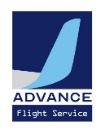Electronic Flight Instruments ENF
|
|
Título del Test: Electronic Flight Instruments ENF Descripción: AIRLINE TRANSPORT PILOT |



| Comentarios |
|---|
NO HAY REGISTROS |
|
See Figure shown on the Left.) You see the indication in the figure on your PFD, but your standby indicator reads 120 knots and the power is set for 120-knot cruise in level flight. You decide the. A— pitot tube may be plugged with ice or a bug. B— standby indicator is defective because there is no red ‘X’ on the speed tape display. C— airspeed means attitude is incorrect. Automated flight decks or cockpits. A— enhance basic pilot flight skills. B— decrease the workload in terminal areas. C— often create much larger pilot errors than traditional cockpits. Automated flight decks or cockpits. A— improve basic flight skills. B— decrease the workload in terminal areas. C— sometimes hide errors. When flying an aircraft with electronic flight displays (EFDs), risk increases. A— if the pilot expects the electronics to enhance flight safety and remove pilot error. B— when the pilot expects the equipment to malfunction on occasion. C— if the pilot believes the EFD will compensate for lack of skill and knowledge. Automation has been found to. A— create higher workloads in terminal areas. B— improve crew situational awareness skills. C— substitute for a lack of aviation experience. When a pilot believes advanced avionics enable operations closer to personal or environmental limits,. A— greater utilization of the aircraft is achieved. B— risk is increased. C— risk is decreased. Automation in aircraft has proven. A— to present new hazards in its limitations. B— that automation is basically flawless. C— effective in preventing accidents. The lighter workloads associated with glass (digital) flight instrumentation. A— are useful in decreasing flightcrew fatigue. B— have proven to increase safety in operations. C— may lead to complacency by the flightcrew. Humans are characteristically. A— disposed to appreciate the workload imposed by automation. B— disposed to expect automation to fail often. C— poor monitors of automated systems. Reliance on automation can translate to. A— decreased cockpit workload. B— increased error awareness. C— lack of manual handling skills. |





